Katyusha: Year 1941
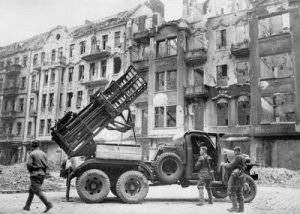 It is well known that 18 of September 1941 of the year by order of the USSR Commissar of Defense No. 308 to four rifle divisions of the Western Front (100, 127, 153 and 161) for the battles under Yelnya - for fighting feats, for organization, discipline and approximate order "- the honorary names" Guards "were assigned. They were renamed respectively 1, 2, 3 and 4, respectively. Later, many of the Red Army units that distinguished themselves and hardened during the war were transformed into Guards.
It is well known that 18 of September 1941 of the year by order of the USSR Commissar of Defense No. 308 to four rifle divisions of the Western Front (100, 127, 153 and 161) for the battles under Yelnya - for fighting feats, for organization, discipline and approximate order "- the honorary names" Guards "were assigned. They were renamed respectively 1, 2, 3 and 4, respectively. Later, many of the Red Army units that distinguished themselves and hardened during the war were transformed into Guards. But Moscow researchers Alexander Osokin and Alexander Kornyakov discovered documents, from which it follows that the question of creating guards units was discussed in Soviet leadership circles in August. And the first Guards regiment was to be a heavy mortar regiment, armed with rocket artillery combat vehicles.
When did the guard appear?
In the course of acquaintance with documents about weapons the beginning of World War II, we found a letter from the People's Commissar of General Engineering of the USSR P.I. Parshin No. 7529ss of August 4, 1941 addressed to the Chairman of the State Defense Committee I.V. Stalin asked to allow the manufacture of over-plan 72 M-13 vehicles (later called "Katyushas" in our country) with ammunition to form one heavy guards mortar regiment.
We decided that a typo had been made, since it is known that the Guards rank was first given by the order of the People's Commissar of Defense No. 308 from 18 of September 1941 to four rifle divisions.
The main points unknown to historians of the GKO ruling are:
“1. Agree with the proposal of the people's commissar of general engineering of the USSR, t. Parshin, on the formation of one guards mortar regiment armed with M-13 installations.
2. Assign the name of the People's Commissariat of General Mechanical Engineering to the newly formed Guards Regiment.
3. Take note that the equipment of the regiment systems and ammunition NKOM manufactures in excess of the set task for M-13 for August. "
It follows from the text of the decree that not only was agreement given to manufacture the above-plan installations M-13, but it was also decided to form a Guards regiment on their basis.
Examination of other documents confirmed our guess: for the first time the concept of “Guards” was used for the first time on 4 (and without any decision on this matter of the Political Bureau of the Central Committee, Presidium of the Supreme Council or Council of People's Commissars) with respect to one particular regiment with a new type of weapon - rocket launchers M-1941, ciphering them with the word "mortar" (written by Stalin personally).
It is striking that the word “guard” for the first time in the years of Soviet power (except for the Red Guard units 1917 of the year) was put into circulation by Commissar Parshin, a man who was not too close to Stalin and had never even visited his Kremlin office during the war years.
Most likely, his letter, printed on 2 of August, was handed over to Stalin by military engineer 1 of rank V.V. Aborenkov - Deputy Head of the State Agrarian University for Rocket Launchers, who was in the chief’s office together with the head of the GAU, Colonel-General Artillery N. D. Yakovlev for 1 hours 15 minutes. Created by the decision adopted that day, the regiment became the first in the Red Army regiment of mobile missile launchers M-13 (from PC-132) - before that, only the batteries of these installations (from 3 to 9 machines) were formed.
It is noteworthy that on the same day, in a memorandum of the chief of artillery of the Red Army, Colonel-General Artillery N.N. Voronov on the work of 5 rocket artillery installations Stalin wrote: “Beria, Malenkov, Voznesensky. Unleash this thing with might and main. To increase the production of shells fourfold to five times six times. ”
What gave impetus to the decision to create a Guards regiment M-13? Express your hypothesis. In June-July 1941, the decision of the Political Bureau of the Central Committee of the CPSU (b) restructured the strategic management system of the armed forces. 30 June 1941 was established by the State Defense Committee (GKO) chaired by Stalin, who was given full authority in the country during the war. July 10 T-bills transformed the General Command Headquarters into the High Command Headquarters. The structure of the rate included I.V. Stalin (chairman), V.M. Molotov, CK Marshals Timoshenko, S.M. Budyonny, K.E. Voroshilov, B.M. Shaposhnikov, General of the Army G.K. Zhukov.
On July 19, Stalin became the People’s Commissar of Defense, and on August 8, 1941, by the decision of the Politburo No. P. 34/319, “the Supreme Commander-in-Chief of all troops of the Workers 'and Peasants' Red Army and the Naval fleet". On the same day, August 8, the states of "one guards mortar regiment" were approved.
We take the liberty of assuming that initially it was a question, perhaps, of the formation of a part intended to ensure the protection of the Supreme Command. Indeed, the staff of the field headquarters of the Supreme Commander-in-Chief of the Imperial Army during the First World War, which Stalin and Shaposhnikov most likely took for the prototype, had heavy weapons, in particular, aviation Bet Defense Division.
But in 1941, the creation of such a field rate didn’t matter - the Germans were approaching Moscow too quickly, and Stalin preferred to carry out the management of the army in Moscow. Therefore, the regiment of guards mortars M-13 did not receive the task to take over the protection of the Supreme Command headquarters.
19 July 1941-th Stalin, setting the task of Tymoshenko to create strike groups for offensive operations in the Smolensk battle and the participation in them of rocket artillery, said: "I think it's time to move from crusaders to action in large groups - regiments ...".
8 August 1941, the states of the regiments of installations M-8 and M-13 were approved. They were supposed to consist of three or four divisions with three batteries in each division and four installations in each battery (from September 11 all the regiments were converted to a three division composition). The formation of the first eight regiments began immediately. They were equipped with combat vehicles made using the pre-war groundwork of components and parts created by the People's Commissariat of General Mechanical Engineering (from 26 in November 1941 was transformed into the People's Commissariat of mortar weapons).
In full force - the Katyush regiments - the Red Army struck the enemy for the first time at the end of August - beginning of September 1941.
As for the Guards regiment M-13, conceived for use in the defense of the Supreme Command Headquarters, its formation was completed only in September. Launchers for it were made above the set task. He is known as the 9 Guards Regiment operating under Mtsensk.
It was disbanded on December 12 1941 of the year. There is information that all his installations had to be blown up at the threat of encirclement by the Germans. The second formation of the regiment was completed on September 4 1943, after which the 9 Guards regiment successfully fought until the end of the war.
Feat captain flerov
 The first salvo of a jet-set in World War II was produced on 14 on July 1941 of the year in 15.15 with a battery of seven (according to other data, four) installations of M-13 for the accumulation of military vehicles at the Orsha railway junction. The commander of this battery (called in different sources and messages in different ways: experimental, experienced, first, and even all of these names at the same time) indicates the captain-artilleryman I.A. Flerov, who died in the 1941 year (according to TsAMO documents missing). For courage and heroism, he was posthumously awarded only in 1963, the Order of the Patriotic War, I degree, and in 1995, he was posthumously awarded the title Hero of Russia.
The first salvo of a jet-set in World War II was produced on 14 on July 1941 of the year in 15.15 with a battery of seven (according to other data, four) installations of M-13 for the accumulation of military vehicles at the Orsha railway junction. The commander of this battery (called in different sources and messages in different ways: experimental, experienced, first, and even all of these names at the same time) indicates the captain-artilleryman I.A. Flerov, who died in the 1941 year (according to TsAMO documents missing). For courage and heroism, he was posthumously awarded only in 1963, the Order of the Patriotic War, I degree, and in 1995, he was posthumously awarded the title Hero of Russia.According to the directive of the Moscow Military District of June 28 of 1941, the number 10864 of the first six batteries was formed. The most reliable, in our opinion, source is the military memoirs of Lieutenant-General A.I. Nesterenko (“Katyushas lead the fire.” - Moscow: Voenizdat, 1975) it is written: “On June 28, the formation of the first battery of field rocket artillery began. It was created in four days in the 1941-m Moscow Red Banner Artillery School named after L.B. Krasin. It was now the world famous battery of captain I.A. Flerova, who produced the first salvo in the accumulation of fascist troops at Orsha station ... Stalin personally asserted the distribution of the Guards mortar units along the fronts, plans for the production of combat vehicles and ammunition ... ".
Famous are the names of the commanders of all six first batteries and the location of their first volleys.
Battery No. 1: 7 installations M-13. Battery Commander Captain I.A. Fleurs. The first salvo 14 July 1941, the freight station Orsha.
Battery No. 2: 9 installations M-13. The commander of the battery, Lieutenant A.M. Kun. The first salvo 25 July 1941 g. On the crossing at the village Kapyrevschina (north of Yartsevo).
Battery No. 3: 3 Installation M-13. The battery commander, Lieutenant N.I. Denisenko. The first salvo 25 July 1941 in 4 km north of Yartsevo.
Battery No. 4: 6 installations M-13. The battery commander, Senior Lieutenant P. Degtyarev. The first salvo 3 August 1941, near Leningrad.
Battery No. 5: 4 Installation M-13. The battery commander is Senior Lieutenant A. Denisov. The place and date of the first salvo are unknown.
Battery No. 6: 4 Installation M-13. The battery commander, Senior Lieutenant N.F. Dyatchenko. The first salvo 3 August 1941 in the 12sp 53sd 43A.
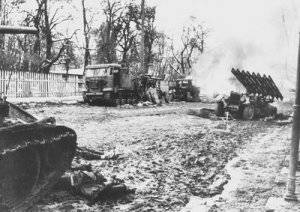 Five of the first six batteries were sent to the troops of the Western direction, where the main attack of the German troops was on Smolensk. It is also known that, in addition to M-13, other types of jet installations arrived in the Western direction.
Five of the first six batteries were sent to the troops of the Western direction, where the main attack of the German troops was on Smolensk. It is also known that, in addition to M-13, other types of jet installations arrived in the Western direction. In the book, AI Eremenko “At the beginning of the war” says: “... From the Stavka a telephonogram was received with the following content:“ It is supposed to be widely used in the fight against the fascists “eresas” and therefore try them out in battle. You are allocated one M-8 division. Test it and report your conclusion ...
We tested new weapons near Rudny ... On 15 of July 1941 in the afternoon, the unusual roar of jet mines shook the air. Like red-tailed comets, mines darted upwards. Frequent and powerful interruptions struck the ear and eyesight with a strong roar and a dazzling brilliance ... The effect of simultaneous rupture of 320 mines for 10 seconds exceeded all expectations ... This was one of the first combat tests of the Eres.
The report of the marshals of Tymoshenko and Shaposhnikov on 24 July 1941 of the year to Stalin reported about the defeat of 15 on July 1941 of the year under the Ore of the German 5 Infantry Division, in which three volleys of the M-8 division played a special role.
It is obvious that a sudden salvo of one M-13 battery (16 PC-132 starts in 5-8 seconds) with a maximum range of 8,5 km was capable of causing serious damage to the enemy. But the battery was not intended to hit a single target. This weapon is effective when working on areas with dispersed manpower and enemy equipment while simultaneously launching several batteries. A separate battery could fire a barrage, stun the enemy, cause panic in its ranks and suspend its offensive for a while.
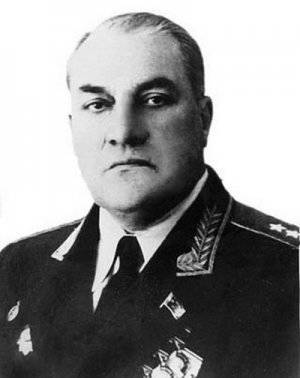 In our opinion, the purpose of sending the battalion to the front of the first rocket launchers was most likely the desire to cover the front and army headquarters in the direction threatening Moscow.
In our opinion, the purpose of sending the battalion to the front of the first rocket launchers was most likely the desire to cover the front and army headquarters in the direction threatening Moscow. This is not just a guess. Studying the routes of the first Katyush batteries shows that first of all they found themselves in the base areas of the headquarters of the Western Front and the headquarters of its armies: 20, 16, 19, and 22. It is not by chance that in their memoirs the marshals Eremenko, Rokossovsky, Kazakov, General Plaskov describe exactly the second-party combat work of the first rocket launchers, which they observed from their command posts.
They point to the increased secrecy of the use of new weapons. IN AND. Cossacks said: “Access to these“ fools ”was allowed only by army commanders and members of military councils. Even the commander of the artillery of the army was not allowed to see them. ”
However, the very first salvo of M-13 rocket launchers produced by 14 on July 1941 of the 15 of the 15 minutes in the railroad hub of the city of Orsha in XNUMX was carried out while performing a completely different combat mission - the destruction of several echelons with secret weapons, which under no circumstances should was to get at the disposal of the Germans.
Studying the route of the first separate experimental battery M-13 (“Flerov battery”) shows that at first it was apparently intended to protect the headquarters of the 20 army.
Then she set a new task. A battery with security on the night of July 6 in the Orsha region moved westward over the territory already abandoned by Soviet troops. It moved along the Orsha-Borisov-Minsk railway route, loaded with echelons going east. July 9 battery and its security were already located in the area of the city of Borisov (135 km from Orsha).
On that day, the order of the State Defense Committee No. 67ss "On the readdressing of transport with weapons and ammunition at the disposal of the newly formed divisions of the NKVD and reserve armies." It required, in particular, to urgently find among the trains departing to the east some very important cargoes which in no case should not reach the Germans.
On the night of 13 on 14 July, the Flerov battery received orders to urgently move to Orsha and launch a missile attack on the station. 14 July in 15 hours 15 minutes Fleurov battery made a volley on the trains with military equipment, located at the Orsha railway junction.
What was in these trains is not known for certain. But there is information that after a salvo for some time no one approached the affected area, and the Germans allegedly even left the station for seven days, which suggests that some poisonous substances got into the air as a result of a rocket attack.
22 July in the evening radio transmission Soviet announcer Levitan reported on the defeat of July 15 of the German 52-th chemical mortar regiment. And on July 27, Pravda published information about the German secret documents allegedly captured during the defeat of this regiment, from which it follows that the Germans were preparing a chemical attack on Turkey.
Raid commander Kaduchenko
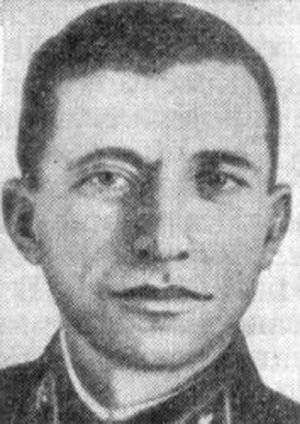 In the book of A.V. Glushko "Pioneers of rocketry" shows a photograph of employees of the Research Institute-3, headed by the deputy director A.G. Kostikov after receiving awards in the Kremlin in August 1941. It is indicated that Lieutenant General is standing with them in the photo. tank troops V.A. Mishulin, who was awarded the Gold Star of the Hero that day.
In the book of A.V. Glushko "Pioneers of rocketry" shows a photograph of employees of the Research Institute-3, headed by the deputy director A.G. Kostikov after receiving awards in the Kremlin in August 1941. It is indicated that Lieutenant General is standing with them in the photo. tank troops V.A. Mishulin, who was awarded the Gold Star of the Hero that day. We decided to find out why he was awarded the highest award of the country and how his award could relate to the creation of M-13 rocket launchers at SRI-3. It turned out that the commander of the 57 Tank Division, Colonel V.A. Mishulin was awarded the title of Hero of the Soviet Union on July 24 1941 of the year “for exemplary performance of the combat missions of the command ... and for showing courage and heroism”. The most striking thing is that at the same time he was still conferred the rank of general - and not the general-major, but immediately the general-lieutenant.
He became the third lieutenant-general of tank forces in the Red Army. General Eremenko, in his memoirs, explains this by the mistake of the coder who carried the title of signatory to the ciphergram to the Headquarters of Eremenko with the idea of awarding Mishulin the title of Hero and General.
It is quite possible that this was the case: Stalin did not cancel the mistakenly signed award order. But just why he also appointed Mishulin Deputy Head of the Main Automobile and Armored Directorate. Are there too many promotions at once for one officer? It is known that after a while General Mishulin as a representative of the Headquarters was sent to the Southern Front. Usually in this capacity were marshals and members of the Central Committee.
Were the courage and heroism shown by Mishulin to the first Katyusha 14 salvo in July 1941 of the year for which Kostikov and 28 July were awarded to Kostikov and the workers of the Research Institute-3?
A study of materials about Mishulin and his 57 Panzer Division showed that this division was redeployed to the Western Front from the South-Western. Unloaded at Orsha station 28 June and became part of the 19-th army. The division's management with one motorized rifle regiment concentrated in the area of Gusino station, 50 kilometers from Orsha, where the headquarters of the 20 army was at that time.
In early July, a tank battalion of 15 tanks, including 7 T-34 tanks, and an armored vehicle arrived from the Oryol tank school to replenish Mishulin’s division.
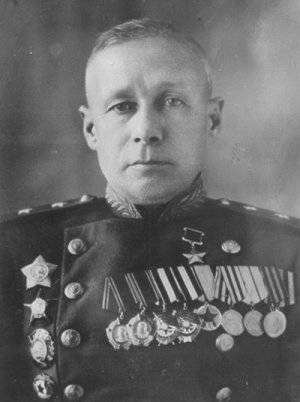 After the death in July 13 fights commander major S.I. Razdobudko battalion headed by his deputy captain I.A. Kaduchenko. And it was Captain Kaduchenko who became the first Soviet tankman who was awarded the title Hero during the years of the Patriotic War 22 in July 1941. He received this high rank even two days earlier than his division commander, Mishulin, because he "headed 2 tank companies that defeated the enemy’s tank column." In addition, immediately after the award, he became another major.
After the death in July 13 fights commander major S.I. Razdobudko battalion headed by his deputy captain I.A. Kaduchenko. And it was Captain Kaduchenko who became the first Soviet tankman who was awarded the title Hero during the years of the Patriotic War 22 in July 1941. He received this high rank even two days earlier than his division commander, Mishulin, because he "headed 2 tank companies that defeated the enemy’s tank column." In addition, immediately after the award, he became another major.It seems that the awards of the division commander Mishulin and the battalion commander Kaduchenko could have taken place if they had fulfilled some very important task for Stalin. And most likely, it was the provision of the first salvo of the "Katyushas" in echelons with weapons that should not have fallen into the hands of the Germans.
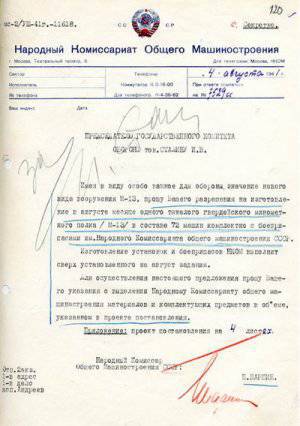 Mishulin skillfully organized the escort of the secret Katyush battery in the rear of the enemy, including a group assigned to her with T-34 tanks and armored vehicles under the command of Kaduchenko, and then her breakthrough from the environment.
Mishulin skillfully organized the escort of the secret Katyush battery in the rear of the enemy, including a group assigned to her with T-34 tanks and armored vehicles under the command of Kaduchenko, and then her breakthrough from the environment.26 July 1941, the newspaper Pravda published an article "Lieutenant-General Mishulin", which described the feat of Mishulin. About how he, wounded and contused, made his way on an armored car through the enemy’s rear to his division, which at that time was engaged in fierce battles in the area of Krasnoe and the railway station Gusino. From this it follows that the commander Mishulin for some reason left his division for a short time (most likely, together with the tank group Kaduchenko) and the wounded man returned to the division only on July 17 1941 of the year.
It is quite likely that they carried out Stalin's instructions about organizing the provision of the “first volley of the battery of Flerov” 14 in July 1941 at the Orsha station on military trains.
On the day of the Flerov battery volley, 14 July, the T-bills No. 140ss was issued on the appointment of L.M. Gaidukov, an ordinary employee of the Central Committee, who oversaw the manufacture of rocket launchers, authorized by the State Defense Committee for the production of PC-132 rocket shells.
On July 28, the Presidium of the Supreme Soviet of the USSR issued two decrees on awarding the creators of the Katyusha. The first is “for outstanding achievements in the matter of inventing and designing one of the types of weapons that raise the power of the Red Army” A.G. Kostikov was awarded the title Hero of Socialist Labor.
The second - were awarded orders and medals 12 engineers, designers and technicians. V. Aborenkov, former military representative, who became deputy chief of the Main Artillery Directorate for rocket technology, designers I. Guay and V. Galkovsky were awarded the Order of Lenin. N. Davydov, A. Pavlenko and L. Schwartz received the Order of the Red Banner of Labor. The Order of the Red Star was awarded to D. Shitov, A. Popov, designers of the Scientific Research Institute-3, and M. Malov and G. Glazko, workers of the plant No. 70. Both of these decrees were printed in Pravda on July 29, and on July 30 of 1941, in the article published in Pravda, a new weapon was said to be formidable without specification.
* * *
Yes, it was cheap and easy to use and easy to use firepower. It could be quickly produced in many factories and quickly installed on everything that moves — on cars, tanks, tractors, even on sleds (as it was used in Dovator’s cavalry corps). And also “eresy” were installed on airplanes, boats and railway platforms.
Launchers began to be called "guards mortars", and their combat calculations - the first guards.
Pictured: Guards Mortar M-31-12 in Berlin in May 1945.
This is a modification of the "Katyusha" (by analogy, received the name "Andrew").
He fired unguided rockets caliber 310 mm
(unlike 132-mm Katyusha shells),
starting with 12 rails (2 tiers of 6 cells in each).
The installation is located on the chassis of the American Studebaker truck,
which was supplied to the USSR under Lend-Lease.
Information